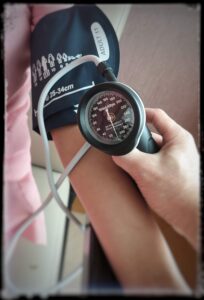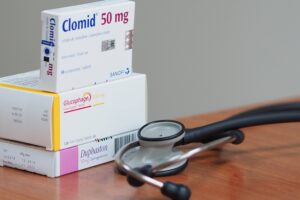 Polycystic ovary syndrome (PCOS) refers to a spectrum of clinical problems due to hormonal and metabolic imbalance, which can affect the reproductive and endocrine systems.
Polycystic ovary syndrome (PCOS) refers to a spectrum of clinical problems due to hormonal and metabolic imbalance, which can affect the reproductive and endocrine systems.
How Common?
PCOS affects 5-10% of all women of childbearing age regardless of race or nationality. It may begin during puberty and become more severe with time.
Causes
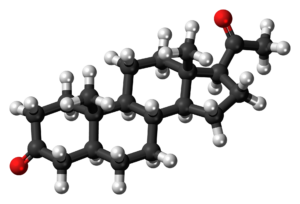 The cause of PCOS is unclear. Multiple mechanisms may be involved in causing the disruption of the relationship between the ovary, hypothalamus-pituitary, adrenal glands and the metabolic system (elevated insulin level and often refers to as hyper-insulinaemia). Between 25 and 75% of patients have some evidence of insulin resistance. Luteinizing hormone (LH) levels are typically elevated with PCOS and follicle-stimulating hormone (FSH) levels are normal or low, but this hormone pattern alone is not diagnostic of the disorder. The androgen (male hormones) level may be elevated in some women with PCOS.
The cause of PCOS is unclear. Multiple mechanisms may be involved in causing the disruption of the relationship between the ovary, hypothalamus-pituitary, adrenal glands and the metabolic system (elevated insulin level and often refers to as hyper-insulinaemia). Between 25 and 75% of patients have some evidence of insulin resistance. Luteinizing hormone (LH) levels are typically elevated with PCOS and follicle-stimulating hormone (FSH) levels are normal or low, but this hormone pattern alone is not diagnostic of the disorder. The androgen (male hormones) level may be elevated in some women with PCOS.
Symptoms and Signs
- Irregular menstrual bleeding resulting in periods of light flow along with heavy flow. There may be increased interval between periods, often up to several months. Some may not have periods for a prolonged period of time (such as only one or two menses in a year).

- Overweight or obesity.
- Infertility (difficulty in conceiving); miscarriages.
- Effect of imbalance hormone (with predominant increase of male hormone effect) such as acne, oily skin, thinning of the scalp hair (alopecia), hirsutism (increased hair growth on the face, arms, legs and from pubic area to navel).
Diagnosis
Diagnosing PCOS can be difficult. Other similar disorders that can affect the endocrine and metabolic system should be excluded first before this diagnosis is made. The syndrome has a number of diagnostic symptoms with no single diagnostic test. Criteria for diagnosis will include the following features :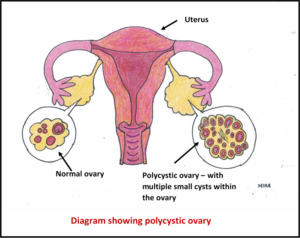
- Polycystic ovaries as seen with the ultrasound scan of the pelvis – these are fairly common and involve ovary enlargement from many small cysts.
- Clinical effects due to increased male hormone (hyperandrogenism), such as acne, oily skin, thinning of the scalp hair (alopecia), hirsutism (increased hair growth on the face, arms, legs and from pubic area to navel).
- Absence of ovulation – the monthly release of the egg from the ovary fails to take place, resulting in irregular menstrual cycles and difficulty in conceiving.
Investigation
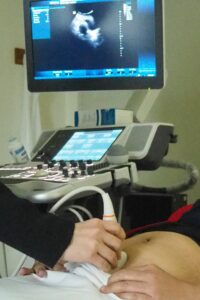
Diagnostic tests may include:
- Ultrasound scan of the pelvis to look for other causes of abnormal menstrual bleeding (if present) and the ovaries (look for the typical polycystic appearance).
- Female hormonal evaluation, especially in those with very scanty or irregular menses.
- Male hormone evaluation if there is an increased male hormone effect
- Exclude diabetes via an oral glucose tolerance test
- Blood lipids level
- Endometrial Biopsy in those with prolonged and heavy menstrual bleeding.
Preventive measures
Cannot be prevented at present. Maintenance of ideal body weight will help to prevent many of the other metabolic and menstrual effects of the PCOS.
Possible Complications
- Diabetes mellitus
- High cholesterol and triglyceride levels.
- Cardiovascular disease; high blood pressure.
- Endometrial cancer (cancer of the uterine lining) in those with irregular and/or prolonged interval of menstrual cycles (eg only a few menses in a year)
- Gestational diabetes or impaired glucose tolerance during pregnancy. Possible higher miscarriage rate
Treatment
Treatment for this disorder depends on the presenting problems, the severity and whether there is a need for pregnancy. The treatment chosen should also help to reduce the long-term metabolic and menstrual consequences.
- Overweight or obese woman should aim to reduce their weight. This should incorporate a structured healthy diet and exercise program. Lifestyle adjustment is important, even for normal weight women.
- Infertility is usually treated successfully by improving diet and exercise, weight reduction and drug therapy. If these measures are not successful, conception can be achieved by additional drug therapies, laparoscopic ovarian surgery and assisted reproductive techniques.
- Cigarette smoking should be discontinued due to risk of cardiovascular problems and diabetes.
- Options for removing excess hair from your face, arms and legs include medications, bleaching, electrolysis, laser therapy, plucking, waxing, and depilation.
- Hormonal therapy such as progestogens or combined oral contraceptive pills is often used to treat abnormal menstrual bleeding.
 If pregnancy is not required, these pills can be continued to regulate menses. Progestogen pills is a better choice to regulate menses in those with no need for contraception (instead of birth control pills).
If pregnancy is not required, these pills can be continued to regulate menses. Progestogen pills is a better choice to regulate menses in those with no need for contraception (instead of birth control pills). - If pregnancy is desired, then ovulation induction medication (such as clomiphene) is given to improve fertility. This works by stimulation of ovulation and timed coitus to increase the chances of conception.
- The modern combined oral contraceptive pills can also help to reduce the excessive male hormone effects. Women will see an improvement in severity of acne and hirsutism after 4 to 6 months of therapy.
- Insulin-lowering medications such as metformin may be prescribed in certain clinical conditions to improve fertility and reverse the adverse metabolic changes associated with PCOS especially in overweight or obese women and the abnormal glucose tolerance test is abnormal.

- Regular follow-up with the doctor is important for early detection and treatment of potential endocrine, gynaecological and metabolic complications such as diabetes, hyperlipidaemia, cardiovascular disease and womb (uterine) cancer.
To download a pdf copy, CLICK HERE

